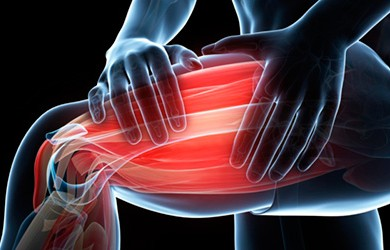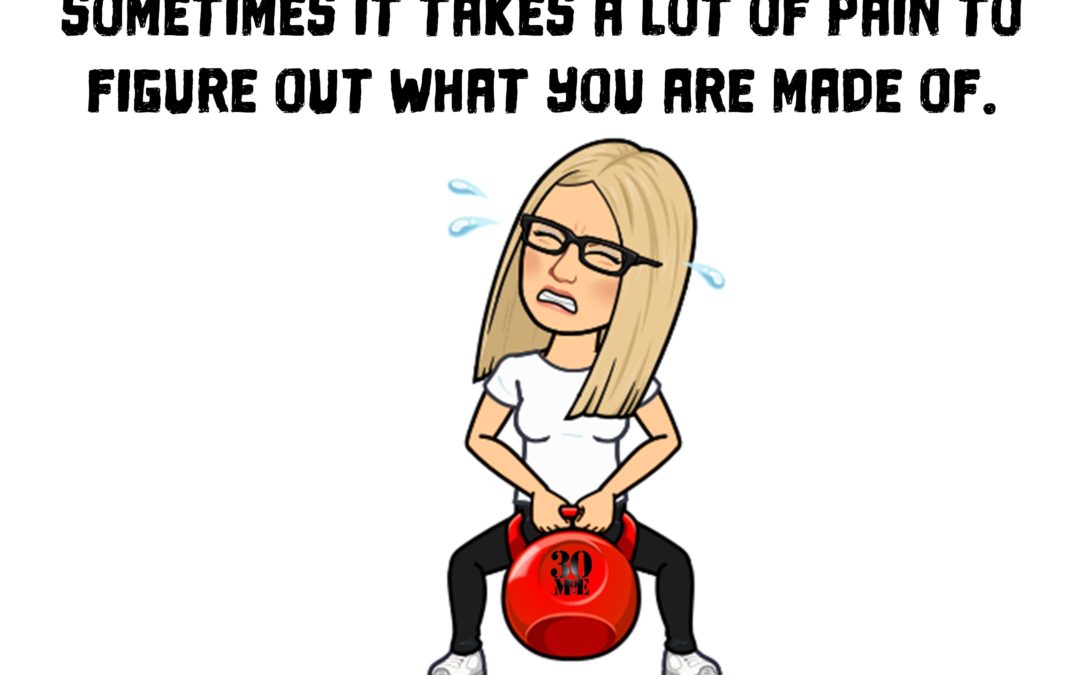I’m going to guess that at some point you’ve had muscle aches from working out. Maybe it was last week even. Usually the pain sets in about two days after a hard workout. It kinda tricks you into thinking “oh, that wasn’t so bad” and then two days later you are sore to touch, swollen, and feeling achy! I’ve been there. I know how it feels. It’s called DOMS (delayed onset muscle soreness).
Delayed onset muscle soreness comes about two days after a hard workout. It’s the body’s reaction to doing something different than usual. It doesn’t have to be weight training; it could be a longer run than usual, a hike uphill, or mountain biking a different terrain. The symptom of pain/achiness is due to little micro-tears in your muscle fibers. Yes, tears in your muscle fibers. That sounds way worse than it really is!
During the process of muscle strengthening there are naturally tiny tears in your muscles. These tears promote nutrient flow to the area in an effort to repair the “damaged” muscles. Still sounds horrible, I know. This helps rebuild the fibers and increase muscle strength. A simple way to think about it is that the muscle breaks down a little bit to be built back up. This is a natural process. The first 24 hours after a hard workout, blood, hormones, and protein flow to the damaged muscles to start repair. By 48 hours, the inflammatory process is 100% at work with more blood flow and fluid directed towards your muscles to heal it. This is why they ache and are swollen; repair and rebuilding is happening.

Of course you can prevent DOMS by not training hard and doing the same thing all the time. (I’m being sarcastic). This doesn’t work if you want to progress in your workouts or are training for a goal. You just have to train smarter, not necessarily harder. This is why we have a scheduled progression of movements in our 8-week program. Your body would be miserable if I had you doing single leg squat press outs on day one, right? (And if you don’t know what I’m talking about it’s because we’re not there yet). Progression is key. Also, staying hydrated has been shown to reduce soreness and doing an adequate warm up.
If you don’t get sore after a workout it doesn’t mean you didn’t work out hard. You do not need to be sore after every workout! If you are hydrated and warming up and happen to get massages regularly, you might not be sore at all – maybe never, but you could still be getting stronger. So soreness does not equal a good workout. It really just means you did something different than your muscles were used to.
Not all soreness is created equal. There is a degree of soreness that requires medical attention. This soreness lasts more than 7 days, your urine becomes dark, and you have severe swelling in your arms and legs. This is painful – this isn’t just muscle soreness. Only one time in my entire career did I encounter someone who this happened to. It was in the 90’s at Gold’s Gym when I was bodybuilding and a meathead (I can use that term because I used to be one) lifted way too much weight. He started to pee purple and that’s when he was sent to the ER. Obviously, this isn’t DOMS, this is muscle damage requiring medical attention.
Train smart. Hydrate. Warm up. Take care of your body and it will take care of you. Oh, and don’t be a meathead.

